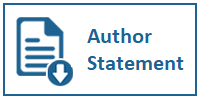Character Creating Process and Meaning of 'GWK' FFI 2015 Animation as Preservation of Balinese Mythology
DOI:
https://doi.org/10.31937/ultimart.v16i2.3417Abstract
The GWK (Garuda Wisnu Kencana) animation tells the story of the adventures of a magical boy named Garuda in obtaining Tirta Amerta (water of life) belonging to Lord Vishnu to free his mother who is held hostage by a magical grandmother named Kadru, the animation that can be watched at GWK Bali Cultural Park won the Citra trophy in the animation category in 2015. The purpose of this research is to explain: 1. The process of GWK character creation, 2. The meaning of the animated character characterized by Balinese mythology. The results showed that the process of creating Garuda Wisnu Kencana animation consisted of several stages which were quite a long process, starting from pre-production, production to post-production and screening until now as in 2023 at GWK cultural park, Uluwatu, Bali. The type of work is 3D animation with a duration of 34 minutes, telling the story of the little Garuda adventure in getting tirta amerta (water of life) belonging to Lord Vishnu to free his mother from the hostage taken by the witch Kadru. The meaning that can be explained from this creation is the meaning of creativity, the meaning of preservation, the meaning of national identity. The finding of this research is that the production process of Garuda Wisnu Kencana animation consists of several stages that are quite long, starting from pre-production. The conclusion of this research is that the process of creating GWK requires collaborative work with high standards and can be a promotion and preservation of Balinese culture.
Keywords: best animation; FFI; 2015; GWK; character; balinese; mythology.
Downloads
Published
How to Cite
Issue
Section
License
Authors retain copyright and grant the journal right of first publication with the work simultaneously licensed under a Creative Commons Attribution-ShareAlike International License (CC-BY-SA 4.0) that allows others to share the work with an acknowledgement of the work's authorship and initial publication in this journal.
Authors are able to enter into separate, additional contractual arrangements for the non-exclusive distribution of the journal's published version of the work (e.g., post it to an institutional repository or publish it in a book), with an acknowledgement of its initial publication in this journal.
Copyright without Restrictions
The journal permits the author(s) to hold the copyright without restrictions and will hold distributing rights without limitations.
The submitted papers are assumed to contain no proprietary material unprotected by patent or patent application; responsibility for technical content and for protection of proprietary material rests solely with the author(s) and their organizations and is not the responsibility of the Ultimart: Jurnal Komunikasi Visual or its Editorial Staff. The main (first/corresponding) author is responsible for ensuring that the article has been seen and approved by all the other authors. It is the responsibility of the author to obtain all necessary copyright release permissions for the use of any copyrighted materials in the manuscript prior to the submission.















